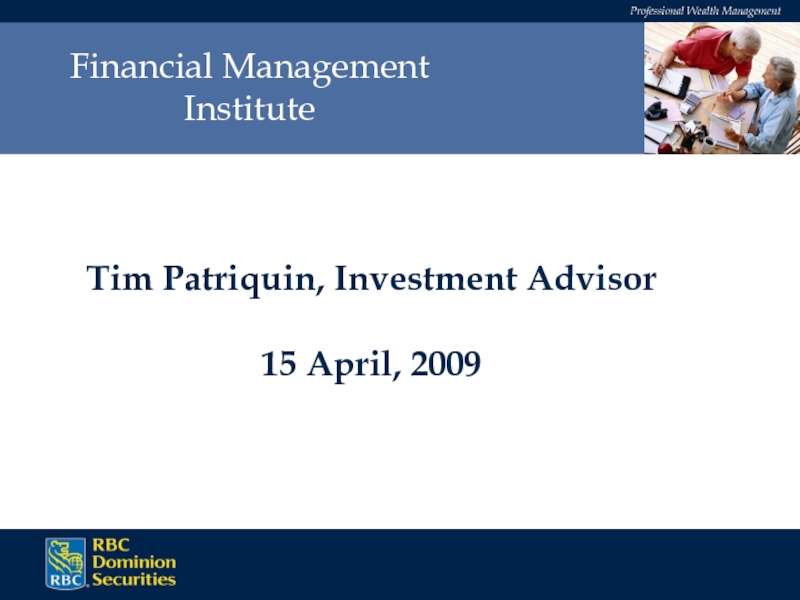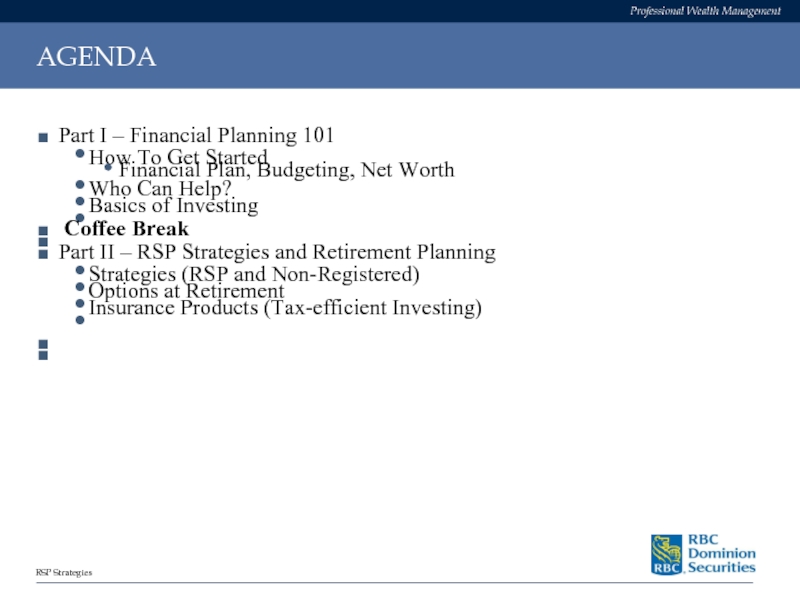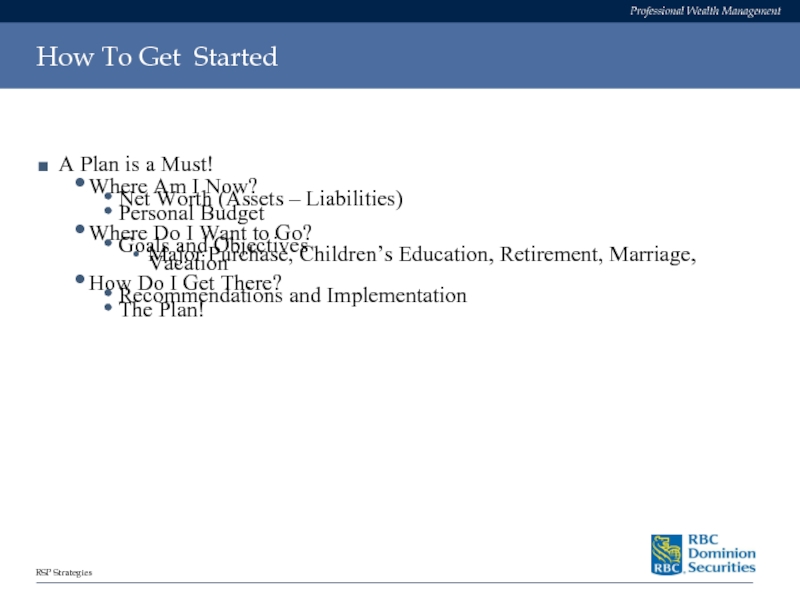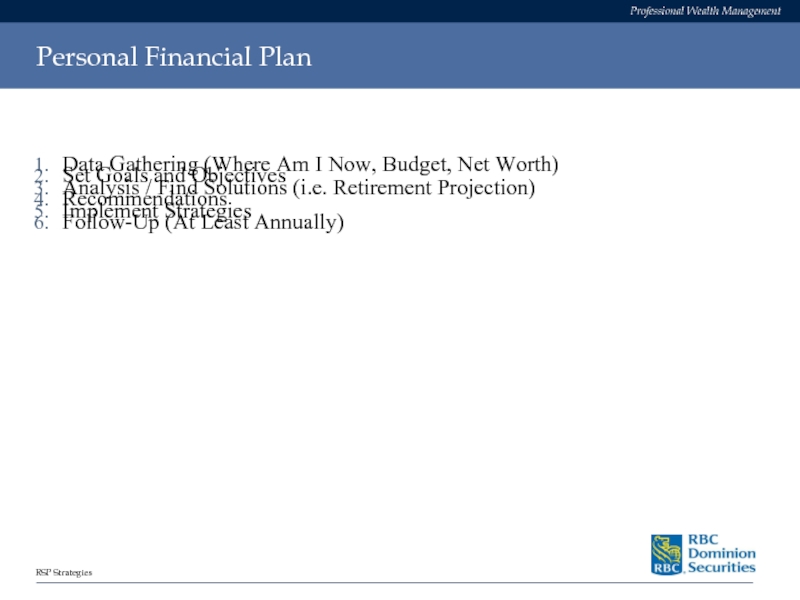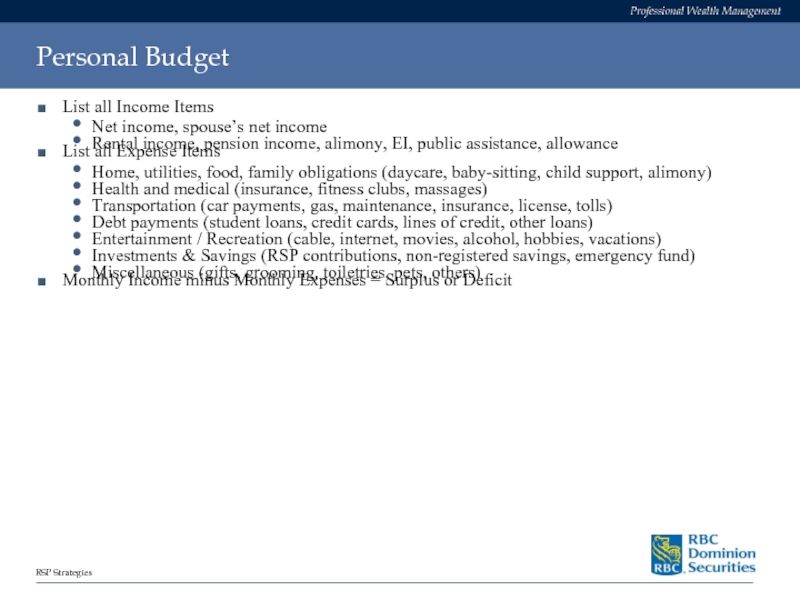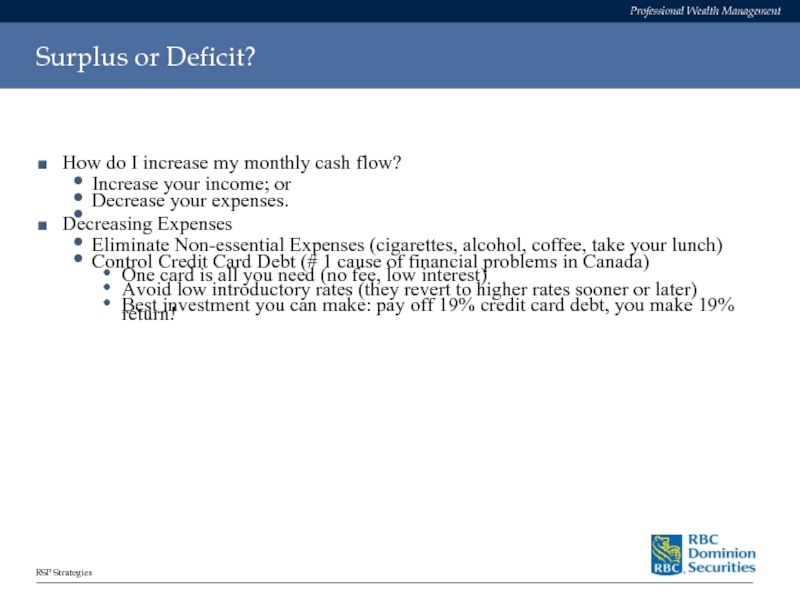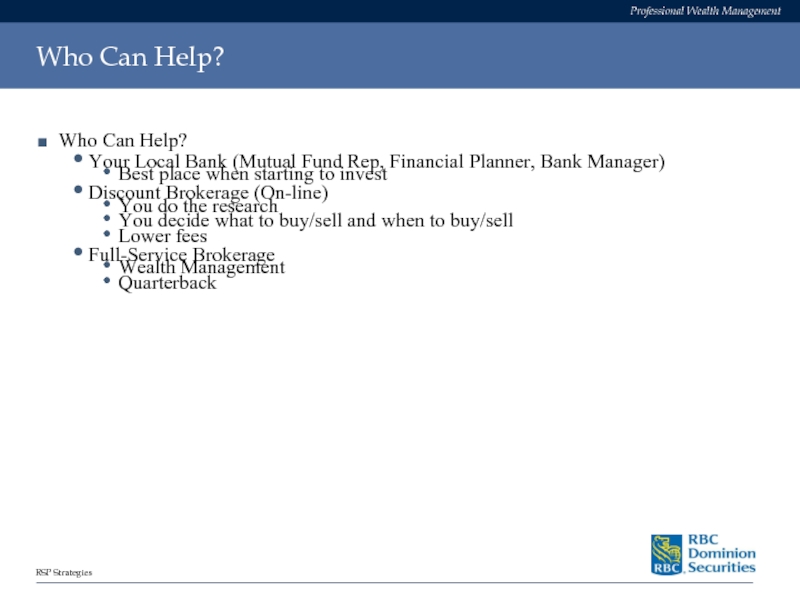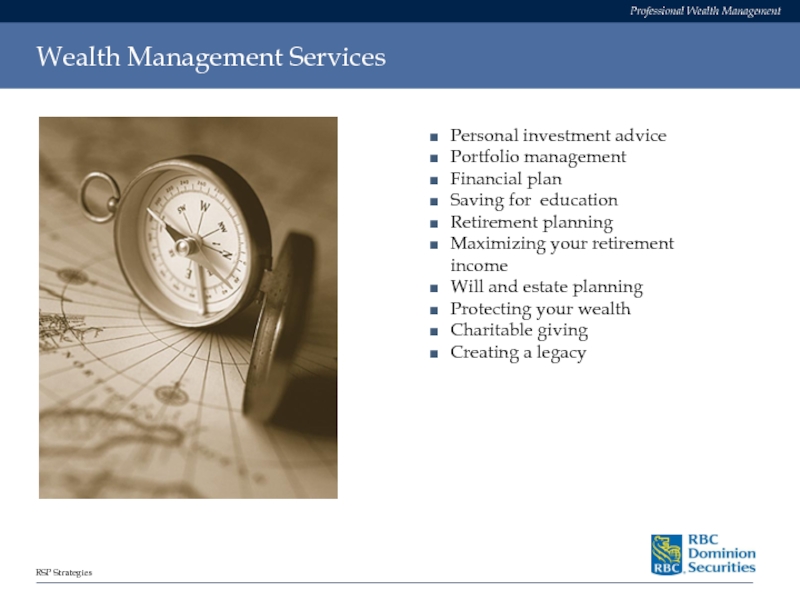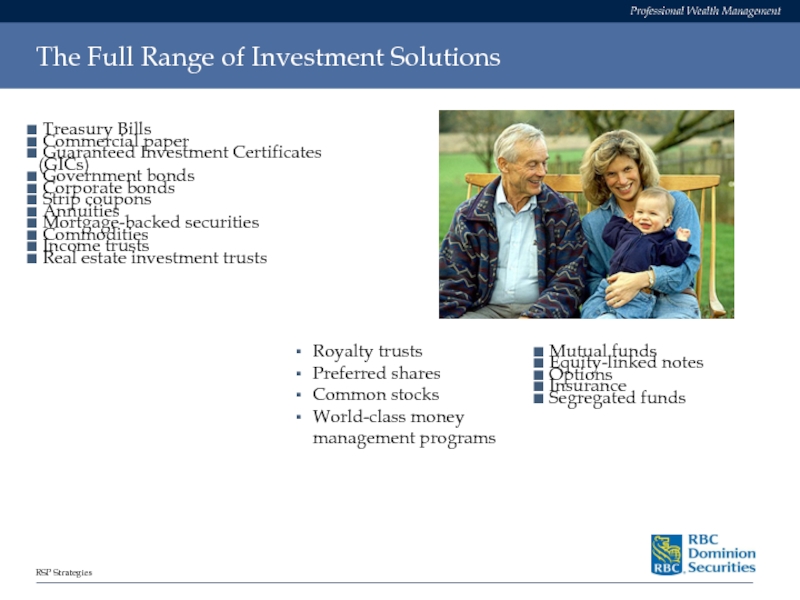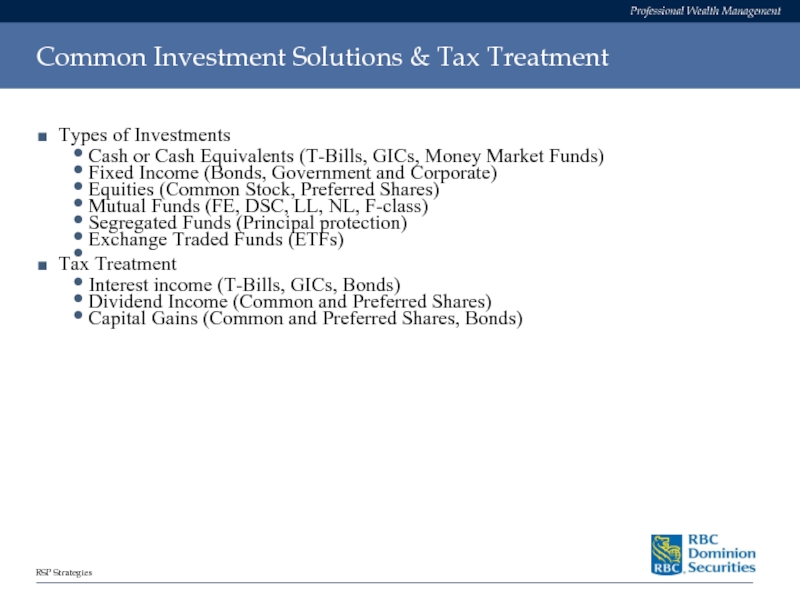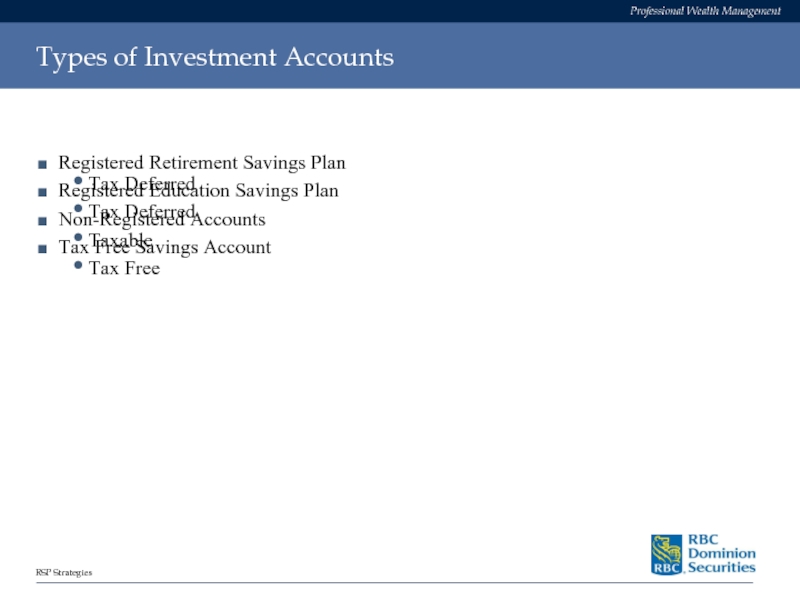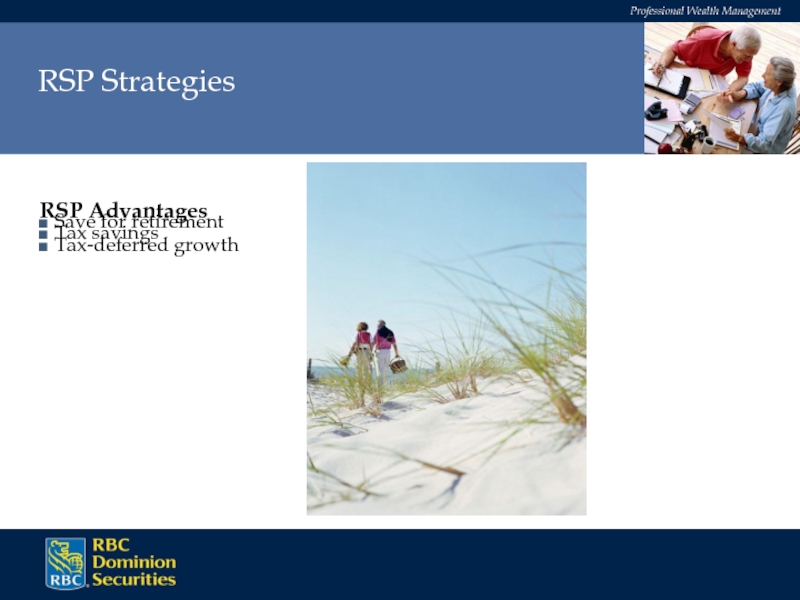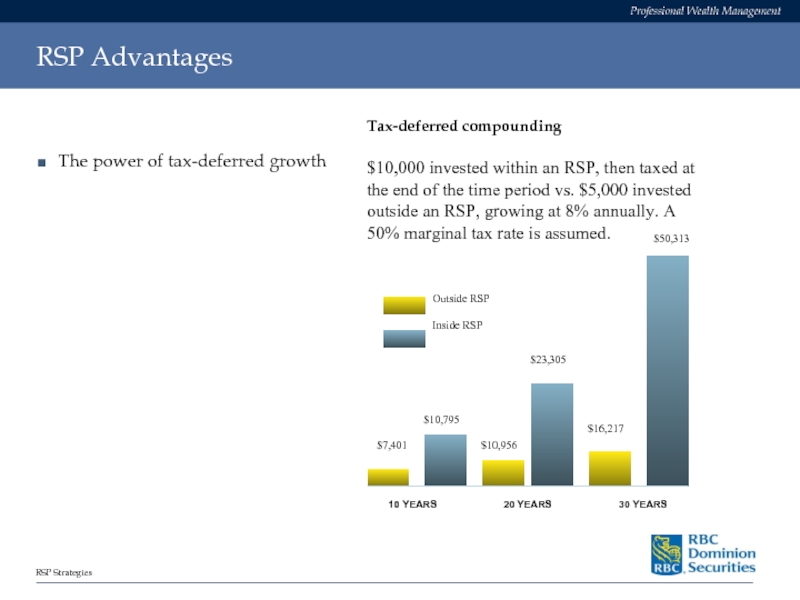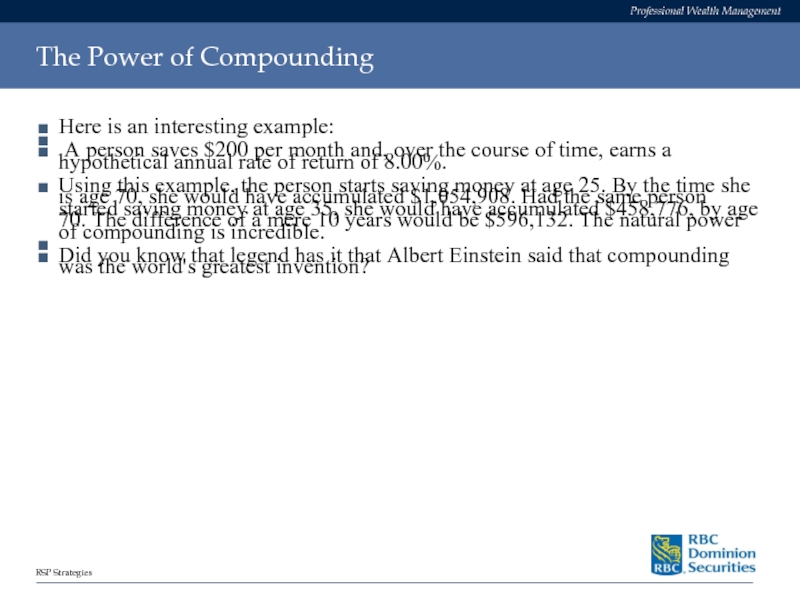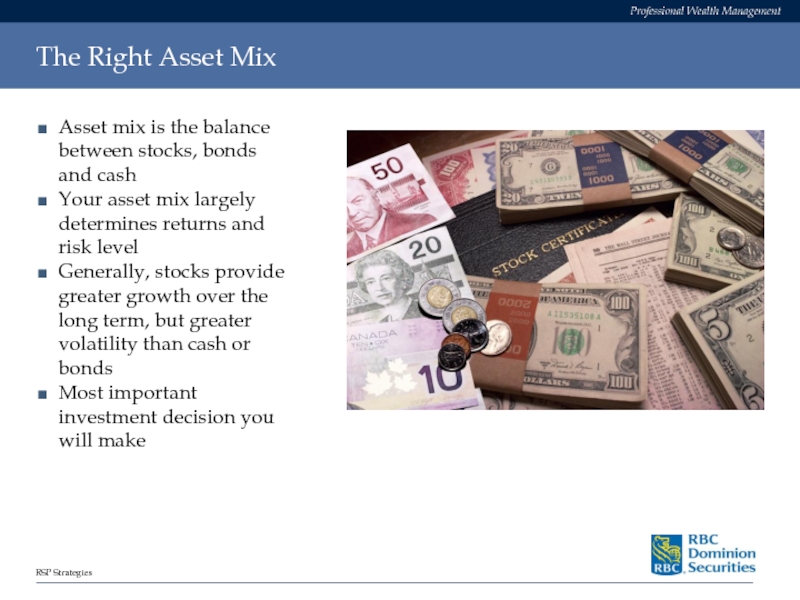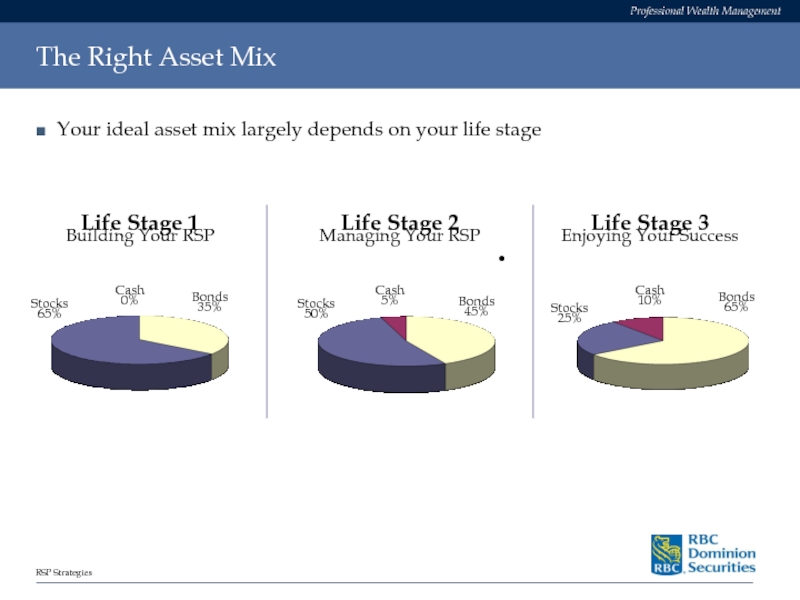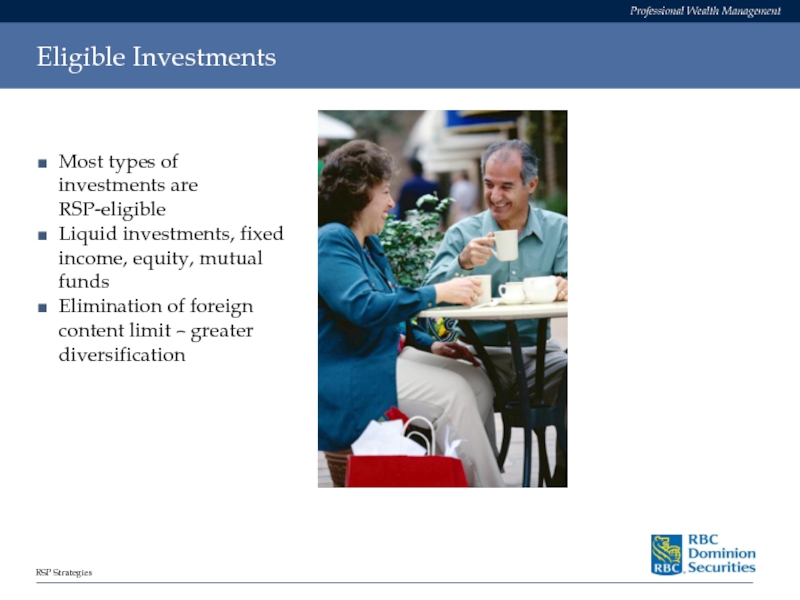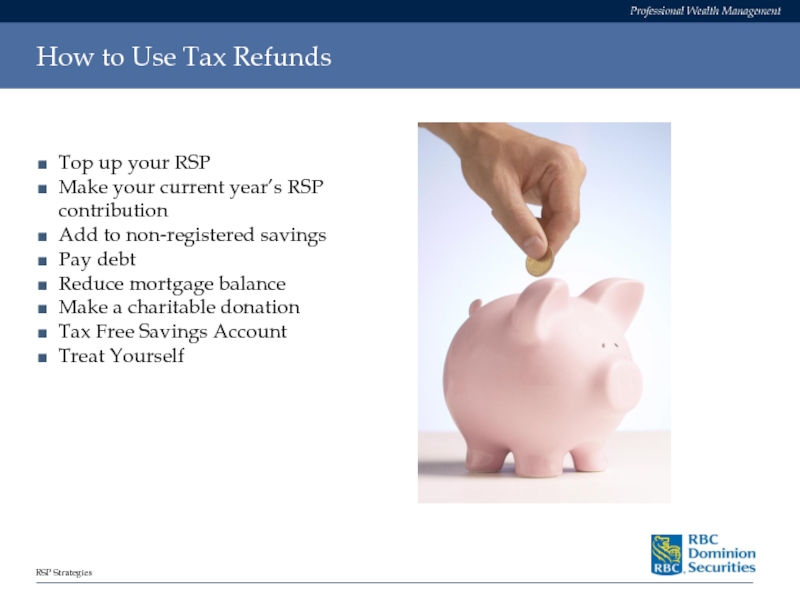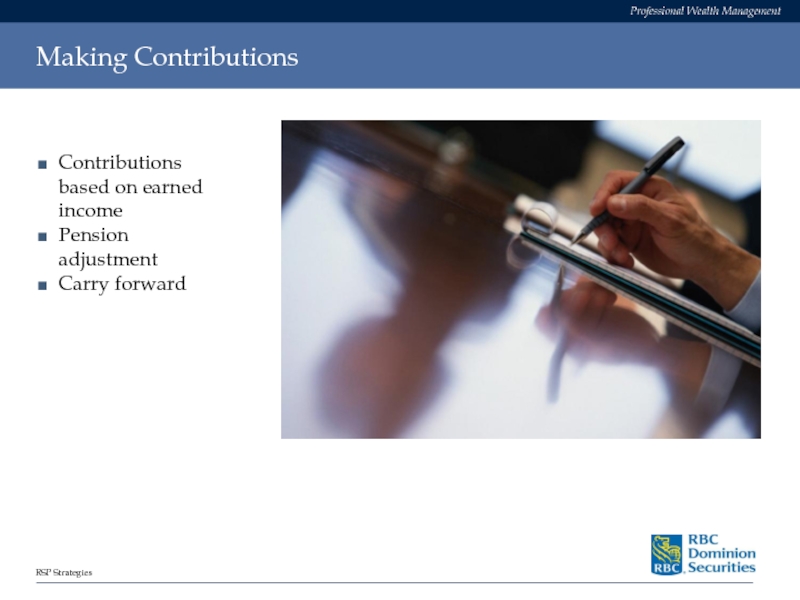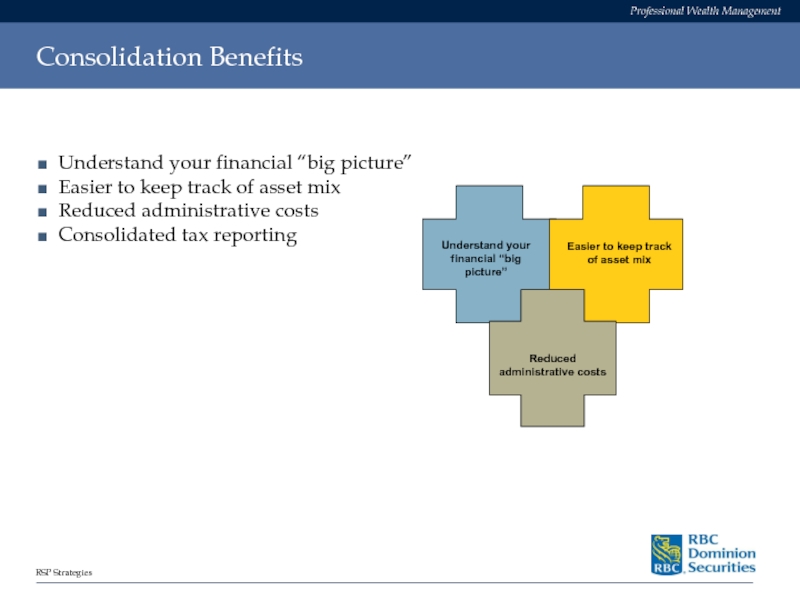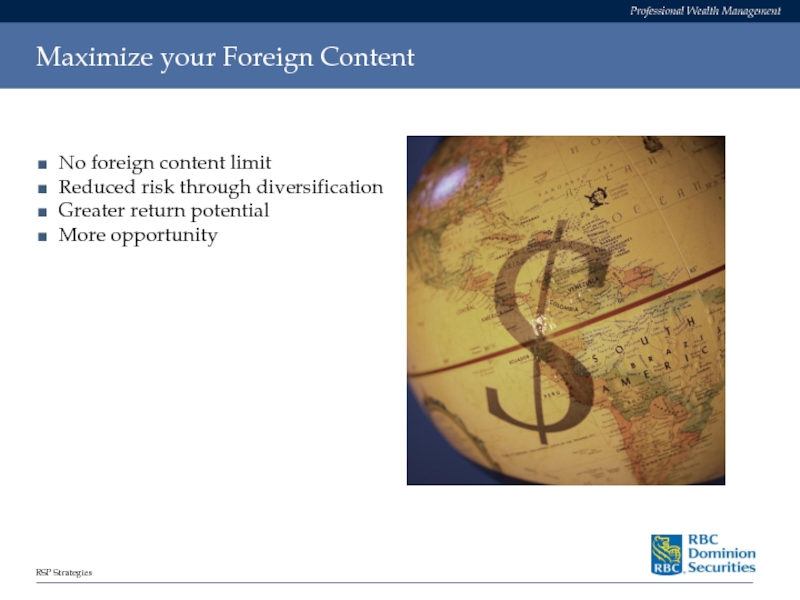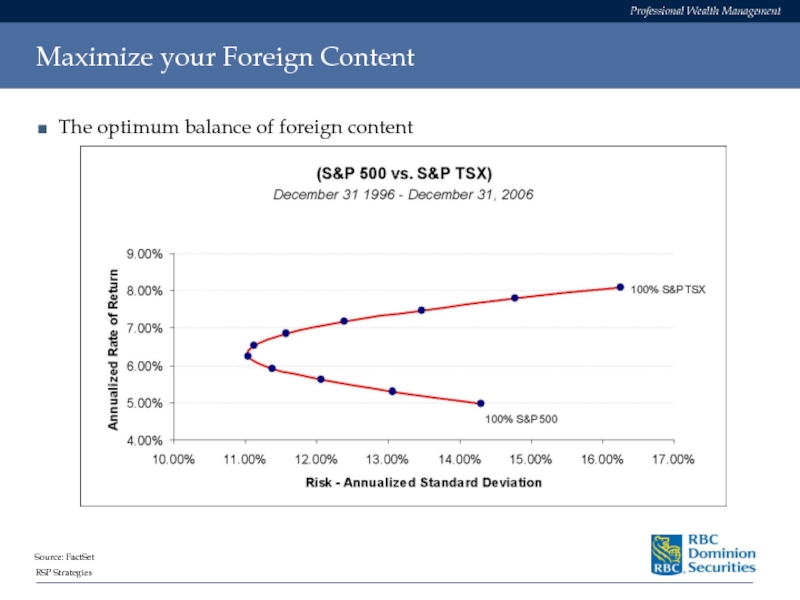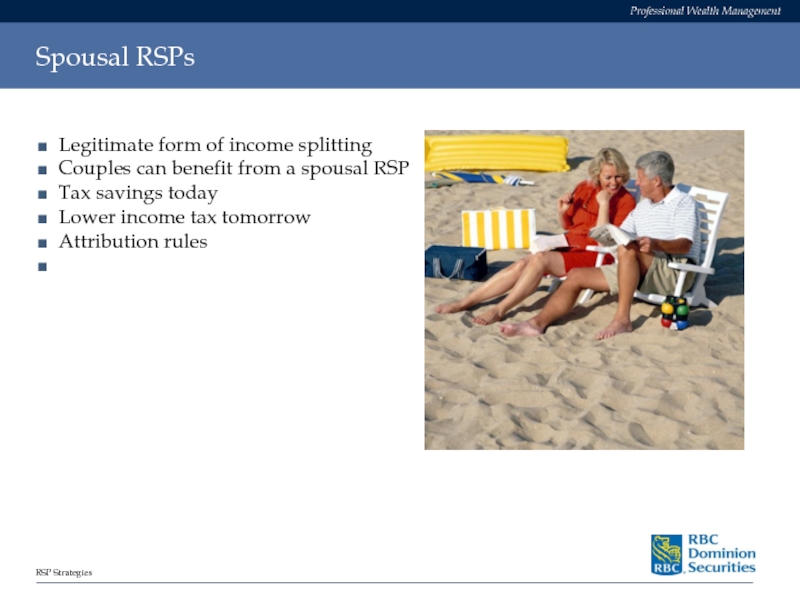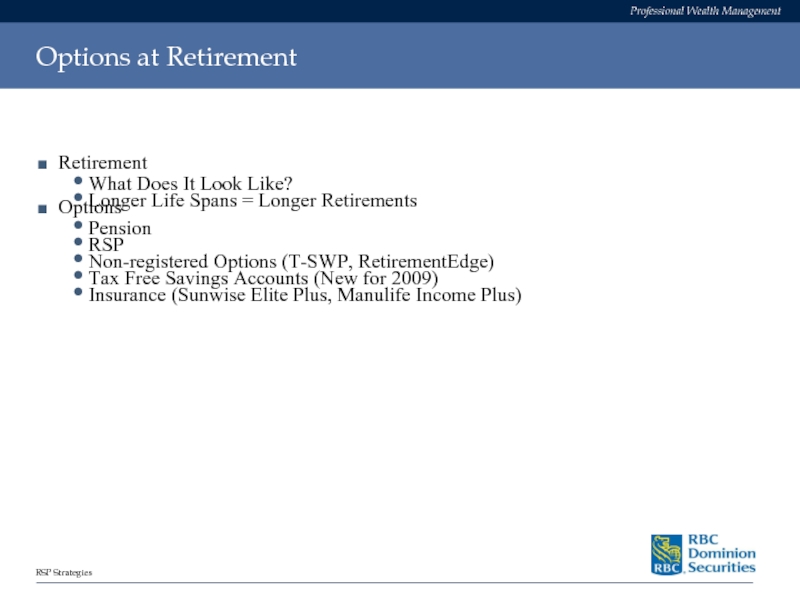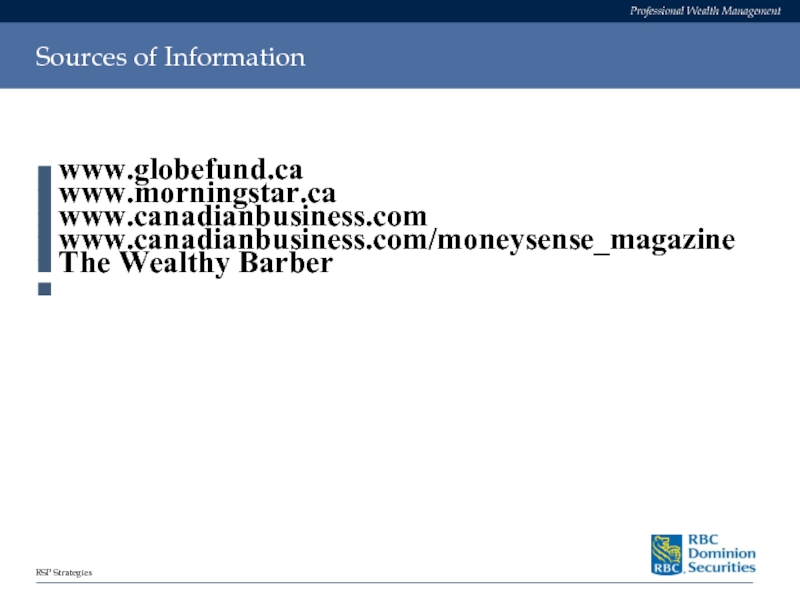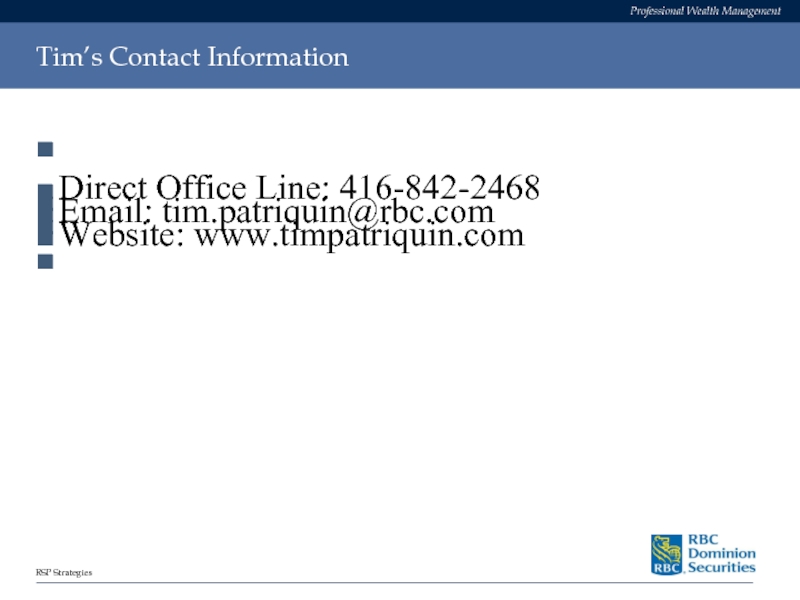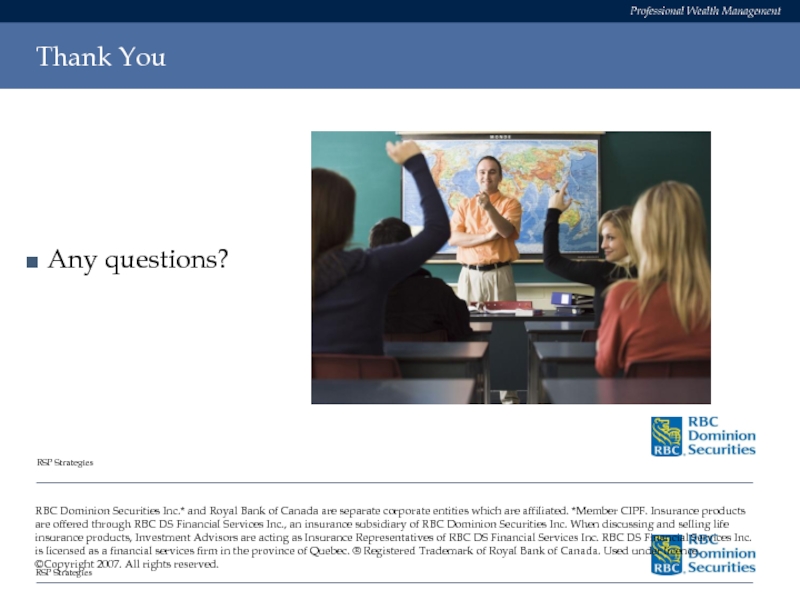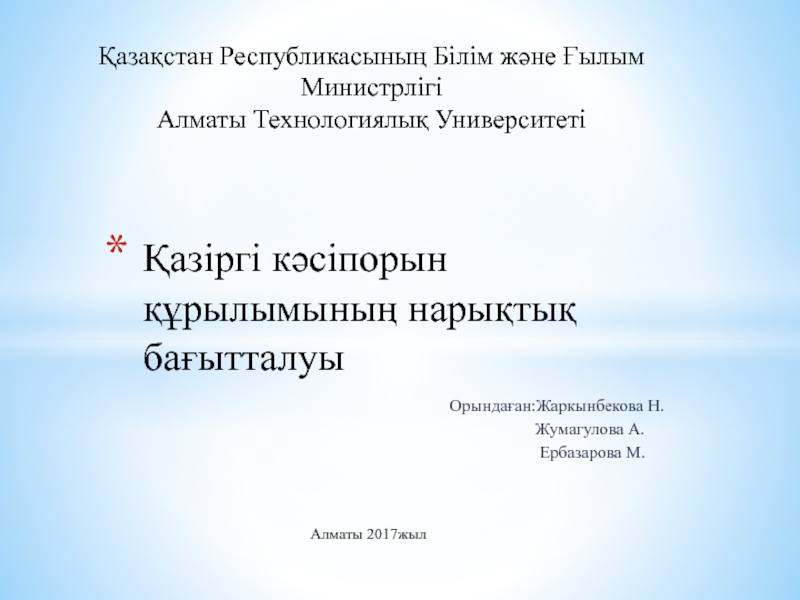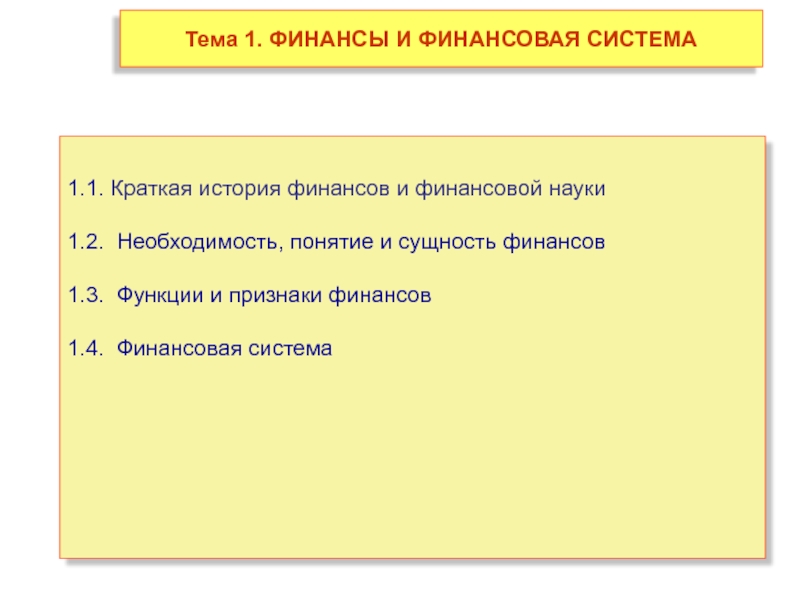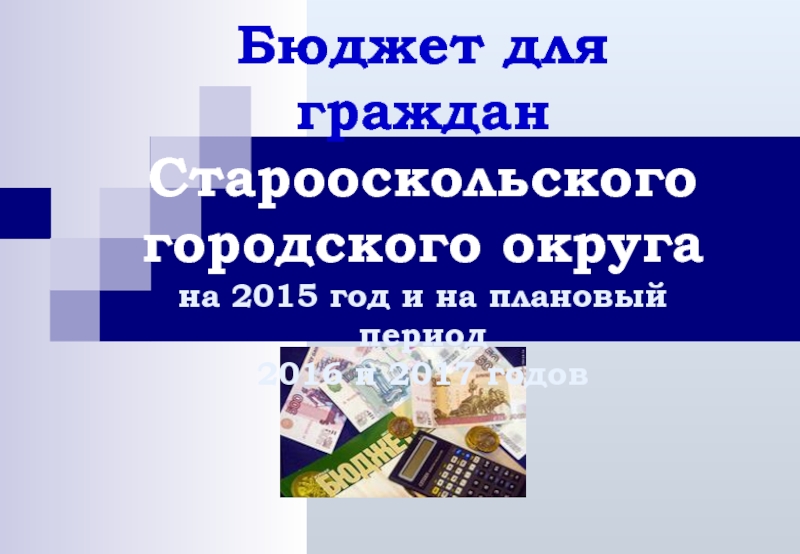- Главная
- Разное
- Дизайн
- Бизнес и предпринимательство
- Аналитика
- Образование
- Развлечения
- Красота и здоровье
- Финансы
- Государство
- Путешествия
- Спорт
- Недвижимость
- Армия
- Графика
- Культурология
- Еда и кулинария
- Лингвистика
- Английский язык
- Астрономия
- Алгебра
- Биология
- География
- Детские презентации
- Информатика
- История
- Литература
- Маркетинг
- Математика
- Медицина
- Менеджмент
- Музыка
- МХК
- Немецкий язык
- ОБЖ
- Обществознание
- Окружающий мир
- Педагогика
- Русский язык
- Технология
- Физика
- Философия
- Химия
- Шаблоны, картинки для презентаций
- Экология
- Экономика
- Юриспруденция
Professional wealth management. Financial managemen презентация
Содержание
- 1. Professional wealth management. Financial managemen
- 2. AGENDA Part I – Financial Planning 101
- 3. How To Get Started A Plan is
- 4. Personal Financial Plan Data Gathering (Where Am
- 5. Financial Planning A financial plan is designed
- 6. Personal Budget List all Income Items Net
- 7. Surplus or Deficit? How do I increase
- 8. Who Can Help? Who Can
- 9. Wealth Management Services Personal investment advice Portfolio
- 10. The Full Range of Investment Solutions Royalty
- 11. Common Investment Solutions & Tax Treatment Types
- 12. Types of Investment Accounts Registered Retirement Savings
- 13. RSP Strategies RSP Advantages Save for retirement Tax savings Tax-deferred growth
- 14. RSP Advantages The power of tax-deferred growth
- 15. The Power of Compounding Here is an
- 16. The Right Asset Mix Asset mix is
- 17. The Right Asset Mix Your ideal asset
- 18. Eligible Investments Most types of investments are
- 19. How to Use Tax Refunds Top up
- 20. Making Contributions Contributions based on earned income Pension adjustment Carry forward
- 21. Consolidation Benefits Understand your financial “big picture”
- 22. Maximize your Foreign Content No foreign content
- 23. Maximize your Foreign Content The optimum balance of foreign content Source: FactSet
- 24. Spousal RSPs Legitimate form of income splitting
- 25. Options at Retirement Retirement What Does
- 26. Sources of Information www.globefund.ca www.morningstar.ca
- 27. Tim’s Contact Information Direct Office
- 28. Thank you Thank You Professional
Слайд 2AGENDA
Part I – Financial Planning 101
How To Get Started
Financial Plan, Budgeting,
Who Can Help?
Basics of Investing
Coffee Break
Part II – RSP Strategies and Retirement Planning
Strategies (RSP and Non-Registered)
Options at Retirement
Insurance Products (Tax-efficient Investing)
Слайд 3How To Get Started
A Plan is a Must!
Where Am I Now?
Net
Personal Budget
Where Do I Want to Go?
Goals and Objectives
Major Purchase, Children’s Education, Retirement, Marriage, Vacation
How Do I Get There?
Recommendations and Implementation
The Plan!
Слайд 4Personal Financial Plan
Data Gathering (Where Am I Now, Budget, Net Worth)
Set
Analysis / Find Solutions (i.e. Retirement Projection)
Recommendations
Implement Strategies
Follow-Up (At Least Annually)
Слайд 5Financial Planning
A financial plan is designed for your individual needs, whether
Your financial plan will help you address a wide range of financial concerns:
Cash management
Debt management
Tax planning
Investment planning
Retirement planning
Risk management
Estate planning
Your plan will contain specific recommendations which you need to implement to achieve your financial goals.
Слайд 6Personal Budget
List all Income Items
Net income, spouse’s net income
Rental income, pension
List all Expense Items
Home, utilities, food, family obligations (daycare, baby-sitting, child support, alimony)
Health and medical (insurance, fitness clubs, massages)
Transportation (car payments, gas, maintenance, insurance, license, tolls)
Debt payments (student loans, credit cards, lines of credit, other loans)
Entertainment / Recreation (cable, internet, movies, alcohol, hobbies, vacations)
Investments & Savings (RSP contributions, non-registered savings, emergency fund)
Miscellaneous (gifts, grooming, toiletries, pets, others)
Monthly Income minus Monthly Expenses = Surplus or Deficit
Слайд 7Surplus or Deficit?
How do I increase my monthly cash flow?
Increase your
Decrease your expenses.
Decreasing Expenses
Eliminate Non-essential Expenses (cigarettes, alcohol, coffee, take your lunch)
Control Credit Card Debt (# 1 cause of financial problems in Canada)
One card is all you need (no fee, low interest)
Avoid low introductory rates (they revert to higher rates sooner or later)
Best investment you can make: pay off 19% credit card debt, you make 19% return!
Слайд 8Who Can Help?
Who Can Help?
Your Local Bank (Mutual Fund Rep,
Best place when starting to invest
Discount Brokerage (On-line)
You do the research
You decide what to buy/sell and when to buy/sell
Lower fees
Full-Service Brokerage
Wealth Management
Quarterback
Слайд 9Wealth Management Services
Personal investment advice
Portfolio management
Financial plan
Saving for education
Retirement planning
Maximizing your
Will and estate planning
Protecting your wealth
Charitable giving
Creating a legacy
Слайд 10The Full Range of Investment Solutions
Royalty trusts
Preferred shares
Common stocks
World-class money management
Treasury Bills
Commercial paper
Guaranteed Investment Certificates (GICs)
Government bonds
Corporate bonds
Strip coupons
Annuities
Mortgage-backed securities
Commodities
Income trusts
Real estate investment trusts
Mutual funds
Equity-linked notes
Options
Insurance
Segregated funds
Слайд 11Common Investment Solutions & Tax Treatment
Types of Investments
Cash or Cash Equivalents
Fixed Income (Bonds, Government and Corporate)
Equities (Common Stock, Preferred Shares)
Mutual Funds (FE, DSC, LL, NL, F-class)
Segregated Funds (Principal protection)
Exchange Traded Funds (ETFs)
Tax Treatment
Interest income (T-Bills, GICs, Bonds)
Dividend Income (Common and Preferred Shares)
Capital Gains (Common and Preferred Shares, Bonds)
Слайд 12Types of Investment Accounts
Registered Retirement Savings Plan
Tax Deferred
Registered Education Savings Plan
Tax
Non-Registered Accounts
Taxable
Tax Free Savings Account
Tax Free
Слайд 14RSP Advantages
The power of tax-deferred growth
Tax-deferred compounding
$7,401
$10,795
$10,956
$23,305
$16,217
$50,313
10 YEARS
20 YEARS
30
Outside RSP
Inside RSP
$10,000 invested within an RSP, then taxed at the end of the time period vs. $5,000 invested outside an RSP, growing at 8% annually. A 50% marginal tax rate is assumed.
Слайд 15The Power of Compounding
Here is an interesting example:
A person
Using this example, the person starts saving money at age 25. By the time she is age 70, she would have accumulated $1,054,908. Had the same person started saving money at age 35, she would have accumulated $458,776, by age 70. The difference of a mere 10 years would be $596,132. The natural power of compounding is incredible.
Did you know that legend has it that Albert Einstein said that compounding was the world's greatest invention?
Слайд 16The Right Asset Mix
Asset mix is the balance between stocks, bonds
Your asset mix largely determines returns and risk level
Generally, stocks provide greater growth over the long term, but greater volatility than cash or bonds
Most important investment decision you will make
Слайд 17The Right Asset Mix
Your ideal asset mix largely depends on your
Life Stage 1
Building Your RSP
Cash
0%
Stocks
65%
Bonds
35%
Life Stage 2
Managing Your RSP
Cash
5%
Stocks
50%
Bonds
45%
Life Stage 3
Enjoying Your Success
Cash
10%
Stocks
25%
Bonds
65%
Слайд 18Eligible Investments
Most types of investments are RSP-eligible
Liquid investments, fixed income, equity,
Elimination of foreign content limit – greater diversification
Слайд 19How to Use Tax Refunds
Top up your RSP
Make your current year’s
Add to non-registered savings
Pay debt
Reduce mortgage balance
Make a charitable donation
Tax Free Savings Account
Treat Yourself
Слайд 21Consolidation Benefits
Understand your financial “big picture”
Easier to keep track of asset
Reduced administrative costs
Consolidated tax reporting
Understand your financial “big picture”
Easier to keep track of asset mix
Reduced administrative costs
Слайд 22Maximize your Foreign Content
No foreign content limit
Reduced risk through diversification
Greater return
More opportunity
Слайд 24Spousal RSPs
Legitimate form of income splitting
Couples can benefit from a spousal
Tax savings today
Lower income tax tomorrow
Attribution rules
Слайд 25Options at Retirement
Retirement
What Does It Look Like?
Longer Life Spans =
Options
Pension
RSP
Non-registered Options (T-SWP, RetirementEdge)
Tax Free Savings Accounts (New for 2009)
Insurance (Sunwise Elite Plus, Manulife Income Plus)
Слайд 26Sources of Information
www.globefund.ca
www.morningstar.ca
www.canadianbusiness.com
www.canadianbusiness.com/moneysense_magazine
The Wealthy Barber
Слайд 27Tim’s Contact Information
Direct Office Line: 416-842-2468
Email: tim.patriquin@rbc.com
Website: www.timpatriquin.com
Слайд 28Thank you
Thank You
Professional Wealth Management
RSP Strategies
RBC Dominion Securities Inc.* and Royal
Any questions?
